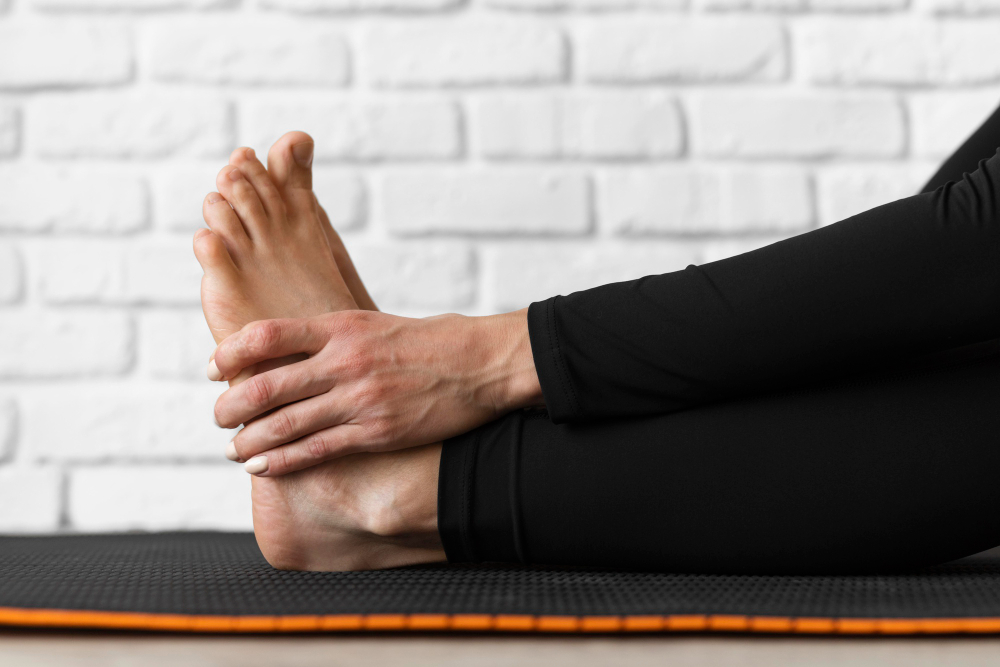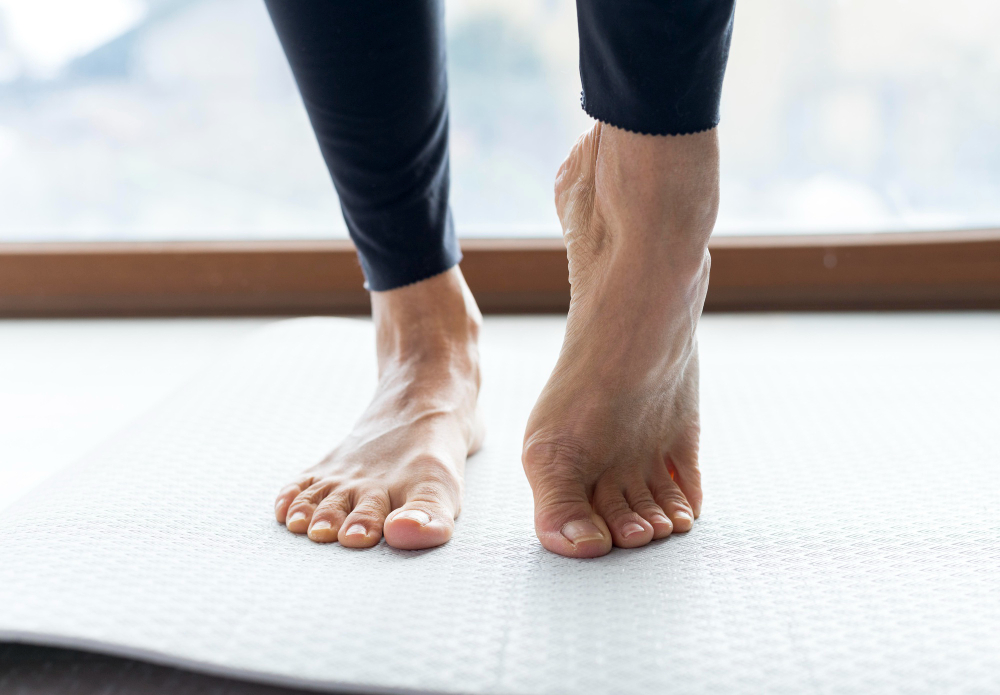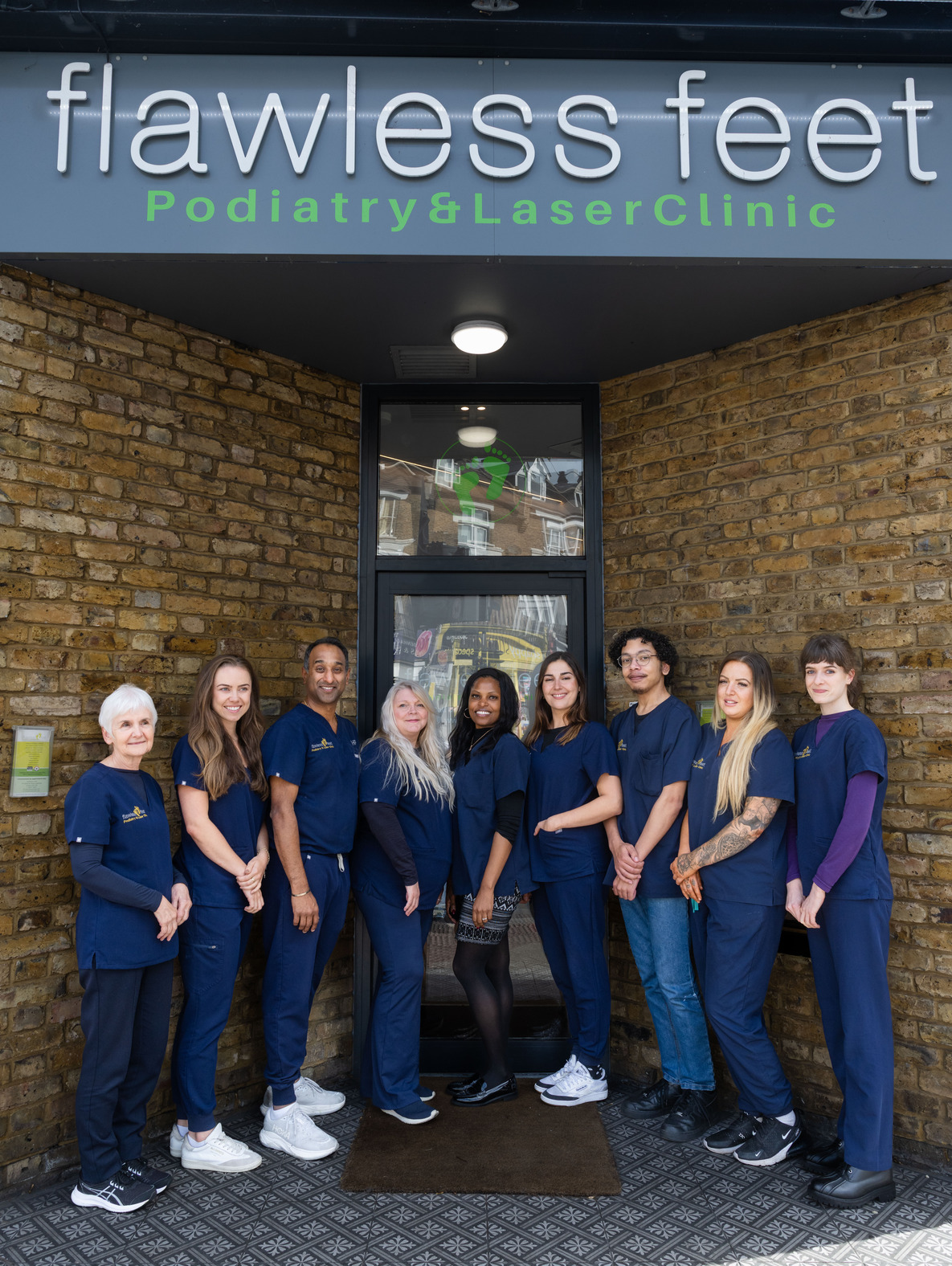Bunions: Causes, Symptoms, and Treatment Options in London
Expert Diagnosis & Care by Podiatry and Chiropodists in London
If you're noticing a bony bump at the base of your big toe or experiencing discomfort in your foot when walking, you may be developing a bunion.
At Flawless Feet Podiatry & Laser Clinic in London, we specialise in the early detection, management, and non-surgical treatment of bunions, helping you stay mobile, pain-free, and confident.


What Are Bunions?
A bunion is a progressive foot deformity that forms when the joint at the base of the big toe (the metatarsophalangeal joint) shifts out of alignment. Over time, the big toe leans toward the second toe, creating a visible bump on the side of the foot and leading to discomfort, inflammation, and changes in how you walk.
Bunions can affect people of all ages, but they are most common in women due to footwear choices and structural foot differences. However, bunions are not just a cosmetic issue—they can interfere with balance, mobility, and long-term joint health.
What Causes Bunions?
Several factors can lead to the development of bunions, including:
-
Genetic predisposition – If bunions run in your family, your foot structure may be more susceptible.
-
Poor foot mechanics – Overpronation or flat feet can place excess pressure on the toe joint.
-
Improper footwear – Narrow, tight, or high-heeled shoes that compress the toes can contribute to bunion formation.
-
Injury or trauma – Foot injuries can disrupt joint alignment and function.
-
Medical conditions – Conditions like arthritis, cerebral palsy, or peripheral neuropathy can affect foot structure and
joint health.
- Repetitive strain – Activities such as ballet, gymnastics, or yoga can place repeated stress on the toes and forefoot.
Bunions are not caused overnight—they gradually worsen with continued pressure and poor foot alignment, making early intervention crucial.


Common Bunion Symptoms
You may be developing a bunion if you experience:
-
A prominent bump at the side of the big toe
-
Pain, swelling, or redness around the joint
-
Restricted toe movement
-
Corns or calluses between the big and second toes
-
Difficulty finding comfortable shoes
- Pain when walking, especially in narrow footwear
In some cases, the symptoms can extend to other parts of the foot due to compensation or altered gait.
When Bunions Lead to Arthritis
As bunions progress, the misalignment can result in joint degeneration and arthritis. The continued strain on the joint can lead to:
-
Calcification within the joint
-
Loss of range of motion
-
Chronic inflammation
- Stiffness or grinding when moving the toe
Once arthritis has set in, non-surgical treatments may no longer restore full joint flexibility, though pain relief and support are still achievable.


How We Treat Bunions
At Flawless Feet Podiatry & Laser Clinic, our approach focuses on early diagnosis and conservative (non-surgical) care to slow progression and relieve pain. Our tailored bunion treatment plans aim to:
- Reduce discomfort
- Restore joint function
- Slow down bunion progression
- Avoid or delay surgery
1. Biomechanical Assessment
We start with a comprehensive foot and lower limb assessment to identify pressure points, joint mobility, and gait abnormalities contributing to the bunion.
2. Custom Orthotics
We design custom foot orthotics that realign the foot, reduce pressure on the bunion, and improve overall posture. These are beneficial for both pre- and post-surgical patients.
3. Footwear Recommendations
Wearing the right shoes is key. We help you choose bunion-friendly shoes that provide space, support, and cushioning—reducing friction and pain.
4. Pain Relief Treatments
For those with inflammation, we offer non-invasive therapies such as high-intensity laser, ultrasound, or manual mobilisation to reduce pain and swelling.
5. Strengthening and Mobility Exercises
We provide exercises to stretch tight muscles, strengthen foot stabilisers, and improve overall foot mechanics—helping you move more comfortably.
What Happens if You Ignore a Bunion?
Left untreated, bunions typically worsen over time. Common long-term consequences include:
-
Increased pain during everyday activities
-
Permanent joint stiffness
-
Development of secondary deformities (like hammertoes)
-
Formation of calluses and corns
- Greater risk of needing surgery in the future
Our experience shows that early intervention can significantly reduce symptoms and prevent complications. Don’t wait until your only option is surgery—visit our clinic for a proactive, personalised plan.


Do I Need Bunion Surgery?
Bunion surgery is usually considered a last resort when conservative treatments fail to relieve pain or when the deformity severely impacts daily life. Most patients benefit from non-surgical care when treatment is started early.
However, if surgery is required, we can refer you to trusted orthopaedic specialists and provide pre- and post-op podiatry support to ensure optimal recovery.






Frequently Asked Questions
No. Our treatments are non-invasive and pain-free, designed to reduce discomfort and support healthy foot mechanics.
Unfortunately, no. Bunions are a progressive condition and will typically worsen without treatment. However, symptoms can be managed effectively with podiatric care.
Most bunions can be managed conservatively. Surgery is only recommended when pain is severe, and all non-surgical options have been exhausted.
Costs vary depending on your treatment plan (e.g., orthotics, consultations). We offer transparent pricing and can discuss payment options during your visit.
Yes—though some modifications may be necessary. We can help you stay active with footwear adjustments and bunion-safe activities.
Book Your Podiatrist in London
Book your treatment at Flawless Feet Podiatry & Laser Clinic in London and experience expert care designed to relieve discomfort, restore movement, and get you back on your feet, comfortably.








